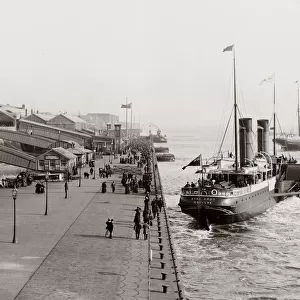Home > Granger Art on Demand > Plans and Diagrams
Diagram from Rene Descartes Principia Philosophiae, 1644, illustrating his view of the earths structure before the development of mountains and oceans; the layers include the earths crust (E), air (F), water (D), and metals (C)
![]()

Wall Art and Photo Gifts from Granger
Diagram from Rene Descartes Principia Philosophiae, 1644, illustrating his view of the earths structure before the development of mountains and oceans; the layers include the earths crust (E), air (F), water (D), and metals (C)
DESCARTES: GEOLOGY, 1644.
Diagram from Rene Descartes Principia Philosophiae, 1644, illustrating his view of the earths structure before the development of mountains and oceans; the layers include the earths crust (E), air (F), water (D), and metals (C)
Granger holds millions of images spanning more than 25,000 years of world history, from before the Stone Age to the dawn of the Space Age
Media ID 10409614
1644 Cross Section Crust Descartes Diagram Formation Geology Metal Rene Science Scientific Revolution Theory Water World
EDITORS COMMENTS
This print showcases a diagram from Rene Descartes' Principia Philosophiae, published in 1644. The illustration offers us a glimpse into Descartes' unique perspective on the structure of the Earth before the formation of mountains and oceans. In this intricate depiction, we can observe several layers that compose our planet's composition. Starting from the outermost layer, we have the Earth's crust (E), which forms a protective shell around its core. Moving inward, we encounter air (F), representing the atmosphere that envelops our world and sustains life as we know it. Further down lies water (D), symbolizing the vast bodies of liquid that cover significant portions of our globe. Interestingly, Descartes also includes metals (C) within his conceptualization of Earth's structure. These metallic elements are believed to exist deep beneath the surface and play an essential role in shaping geological formations. This engraving not only reflects Descartes' profound understanding of geology but also highlights his contributions to scientific revolution during this era. Through meticulous observation and analysis, he sought to unravel nature's mysteries and develop theories that would shape future scientific thought. As we admire this woodcut print today, let us appreciate how Descartes' innovative ideas continue to inspire modern scientists in their quest for knowledge about our planet's origins and evolution.
MADE IN THE USA
Safe Shipping with 30 Day Money Back Guarantee
FREE PERSONALISATION*
We are proud to offer a range of customisation features including Personalised Captions, Color Filters and Picture Zoom Tools
SECURE PAYMENTS
We happily accept a wide range of payment options so you can pay for the things you need in the way that is most convenient for you
* Options may vary by product and licensing agreement. Zoomed Pictures can be adjusted in the Cart.






